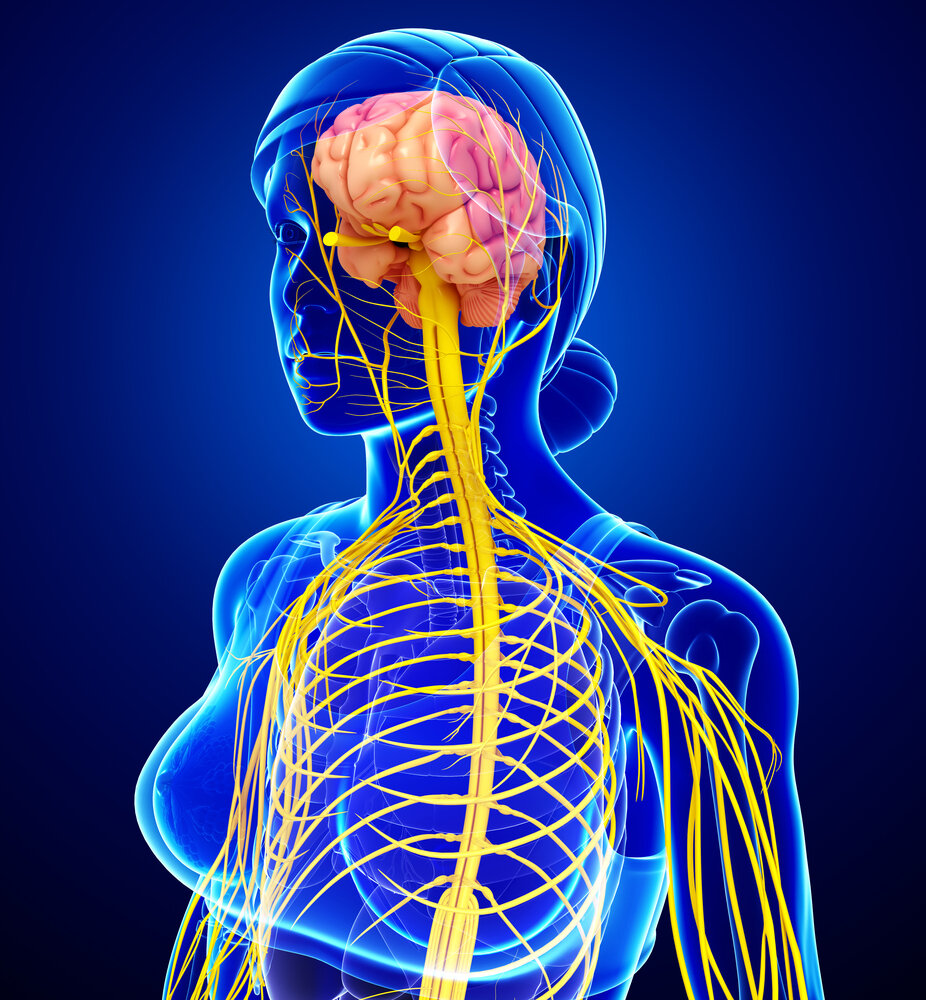Spinal cord injury: The ins and outs
Spinal cord injury: The ins and outs
Hey readers! This month we thought we’d have a look into the world of spinal cord injury. A spi-nal cord injury is damage to any part of the spinal cord that leads to loss of movement or feeling to a body part or parts. The stats indicate that males under 40 years of age are most commonly affected by this potentially devastating condition. More than 80% of spinal cord injuries result from road traffic accidents. The spinal cord can be complex, so let’s vertebr(eak) it down!Anatomy
The spinal cord is an extension of the brain which runs from the base of the skull down the body. It is a collection of nerves which transmits messages from the brain to the rest of the body and back again. It is so important, that it is protected deep inside our spinal column. Each vertebra in the spinal column is made up of a body connected with a bony arch which creates a hole through the vertebrae. When stacked on top of each other, this creates a continuous ‘canal’, known as the spinal canal, where the spinal cord lives. This level of protection makes it quite dif-ficult to injure the cord, but with a large enough force acting on the spinal column, it is possible for injury to occur. Think of the forces that act on the body in a high-speed car accident. It’s easy to see how it can happen in these instances.
Types of injury
There are some simple terms we use to describe spinal cord injuries. These include:
• Complete: No electrical signals can pass from the brain to the body past the level of the injury, leaving affected parts of the body without movement and feeling.
• Incomplete: Some of the signals remain intact whilst others are disrupted. A person may be able to still feel a limb they cannot move. Or this may leave a person with more func-tion on one side of the body compared to the other.
• Open: This refers to direct trauma or contact with the spinal cord. An example is a gun-shot wound which penetrates through the bone affecting the cord. These cases are very rare.
• Closed: This refers to indirect trauma to the cord through fracture or dislocation of the spinal column which leads to compression of the cord as the spinal canal is disrupted. These are the most common causes of spinal cord injury.
In the rare instance that all or part of the spinal cord is cut, it leaves the patient permanently af-fected because there is little to no healing of the nerve tissue in the spinal cord. It is much more common that the cord is affected due to compression from another object. In a car accident, large forces may cause the vertebrae to fracture or dislocate which presses on the cord leading to bruising and swelling. Other causes may be pressure from a severe disc prolapse, an abscess or tumor, or from infection spreading from the vertebrae (like in cases of tuberculosis). Pressure can disrupt the blood flow to and from the nerve tissue leading to nerve cell death, or the direct pressure into the tissue may affect the conduction of nerve signals as they pass through the site of the injury.
Signs & symptoms
The signs and symptoms of spinal cord injury very much depend on the level of the injury and which parts of the cord are affected at that level. Any or all of the following functions of the body may be affected with spinal cord injury:
• Movement: Injury may result in complete or partial paralysis of a body part
• Strength: Weakness is a common outcome
• Feeling or sensation: A person may lose the ability to feel pain, cold, heat and vibration
• Blood pressure and body temperature control
• Sexual function
• Bowel and bladder function
The most severe injuries are a result of trauma to the neck. Injuries that affect the cord at these levels can lead to ‘quadriplegia’ (i.e. paralysis of all four limbs) or even death (if the nerves which control breathing are disrupted). Injuries below the neck levels can lead to ‘paraplegia’, which is paralysis of the lower limbs, leaving a person needing the use of a wheelchair.
Treatment
Once the initial bruising and swelling of the cord starts to subside, it is possible for some of the function that was lost to return. This has been known to take up to 18 months to occur. Most people require extensive exercise rehabilitation to recover the function that has been lost, so this is usually started as early as possible to ensure the best possible outcome. As an example, some people may have to learn to walk again, whilst others may never be able to walk again. This all depends on the severity and type of injury they have sustained. In the majority of cases of spinal cord injury, usually not all functions are able to be recovered.
People with spinal cord injuries may use the services of a chiropractor as part of their rehabilita-tion journey. We can help to mobilise body parts, massage muscles, and help with the re-training of movement. After all, we are experts in the mechanics of the human body and how it functions from the inside out.
Stay safe everyone! Look after yourselves and others around you.
References
1. Spinal Cord Injuries Australia. 2020. What is a spinal cord injury? [Online]. Available from: https://scia.org.au/what-is-a-spinal-cord-injury/. [Accessed 4 April 2020]
2. Snell, R. 2012. Clinical Anatomy by Regions. 9th ed. USA: Lippincott Williams & Wilkins
3. Snell, R. 2010. Clinical Neuroanatomy. 7th ed. USA: Lippincott Williams & Wilkins
4. Xui, P. 2012. Pathology. 4th ed. UK: Elsevier Mosby
5. Oliver, J. and Middleditch, A. 1991. Functional Anatomy of the Spine. Oxford: Butterworth Heinemann

